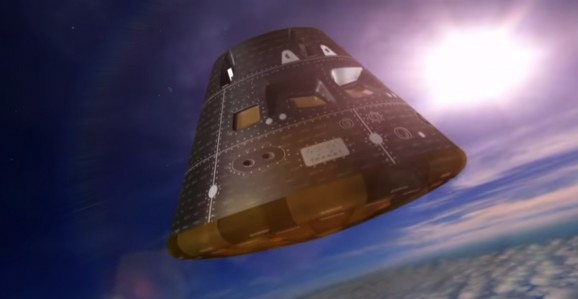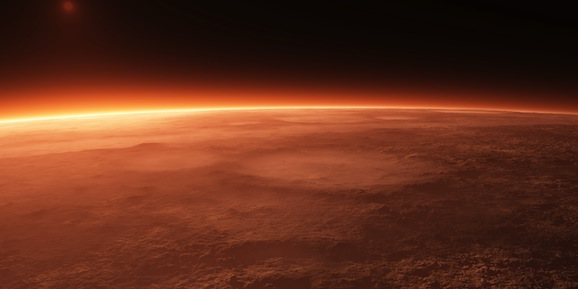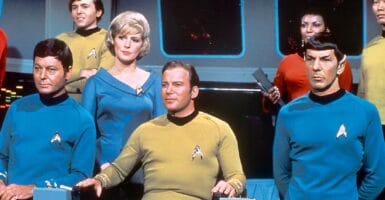NASA Announces Tomorrow’s Orion Launch Is The First Step Towards Mars
This article is more than 2 years old
 Tomorrow, NASA plans to launch their newest spacecraft Orion. Since its inception, one of the aims has always been that this could be the vessel that takes humans farther than we’ve ever been before, and the space agency made that official, announcing plans to send a manned mission to Mars in the next few decades.
Tomorrow, NASA plans to launch their newest spacecraft Orion. Since its inception, one of the aims has always been that this could be the vessel that takes humans farther than we’ve ever been before, and the space agency made that official, announcing plans to send a manned mission to Mars in the next few decades.
Science fiction has always had a fascination with walking on the surface of other worlds, and we accomplished that in 1969 when Neil Armstrong became the first person touch down on the moon. Though mechanical feet of various kinds have visited other celestial bodies, no flesh-and-blood human has walked anywhere but Earth since Apollo 17 in 1972.
That said, tomorrow, December 4 at 7:05, when Orion takes flight, is the first step in a long journey that, if successful, will see a human being on the surface of the Red Planet. The ship was created in the same spirit at the Apollo crafts (and was introduced by a former Doctor Who star), though it will be able to travel much, much greater distances.
After takeoff at Florida’s Cape Canaveral Air Force Station, the capsule plans to travel 3600 miles above the surface of the Earth. This unmanned flight is designed to test a variety of Orion’s primary systems and features. It will encounter high radiation, and the exterior heat shield will get practice dealing with temperatures in excess of 4000 degree Fahrenheit on reentry. The abort systems will also be tested before it finishes up and splashes down in the Pacific Ocean 600 miles southwest of San Diego. At least that’s the plan. Recent events have shown that test flights don’t always go according to schedule.
 This is all in preparation for future missions that will feature human pilots and crew. Even if this all goes off without a hitch tomorrow, this won’t happen for quite a while, as the first one of manned jaunt isn’t scheduled until 2021. These will, however, include the oft-discussed mission to land humans on an asteroid, which NASA plans to place in orbit around the moon. That part will be accomplished by a robotic craft, not by Bruce Willis and his team, though we’re getting closer and closer to the events of Armageddon becoming a reality every day. Once in place, astronauts can use the asteroid as a practice facility, landing, walking in new space suits, navigating, and a variety of other skills that will prove useful when travelling to Mars.
This is all in preparation for future missions that will feature human pilots and crew. Even if this all goes off without a hitch tomorrow, this won’t happen for quite a while, as the first one of manned jaunt isn’t scheduled until 2021. These will, however, include the oft-discussed mission to land humans on an asteroid, which NASA plans to place in orbit around the moon. That part will be accomplished by a robotic craft, not by Bruce Willis and his team, though we’re getting closer and closer to the events of Armageddon becoming a reality every day. Once in place, astronauts can use the asteroid as a practice facility, landing, walking in new space suits, navigating, and a variety of other skills that will prove useful when travelling to Mars.
While it won’t be soon, a mission to Mars will likely take place within most of our lifetimes. According to the current timetable, the first attempt will go down in the 2030s. So the stakes are high for tomorrow’s $370 million dollar test flight, and we have our fingers crossed that everything goes smoothly. This is only one step in the process, especially considering that NASA doesn’t currently have the funds to develop a lander to get people from Orion to the Martian surface. But it is the beginning of what ultimately takes a human being to another planet for the first time, and it’s hard not to imagine the possibilities and get excited.












